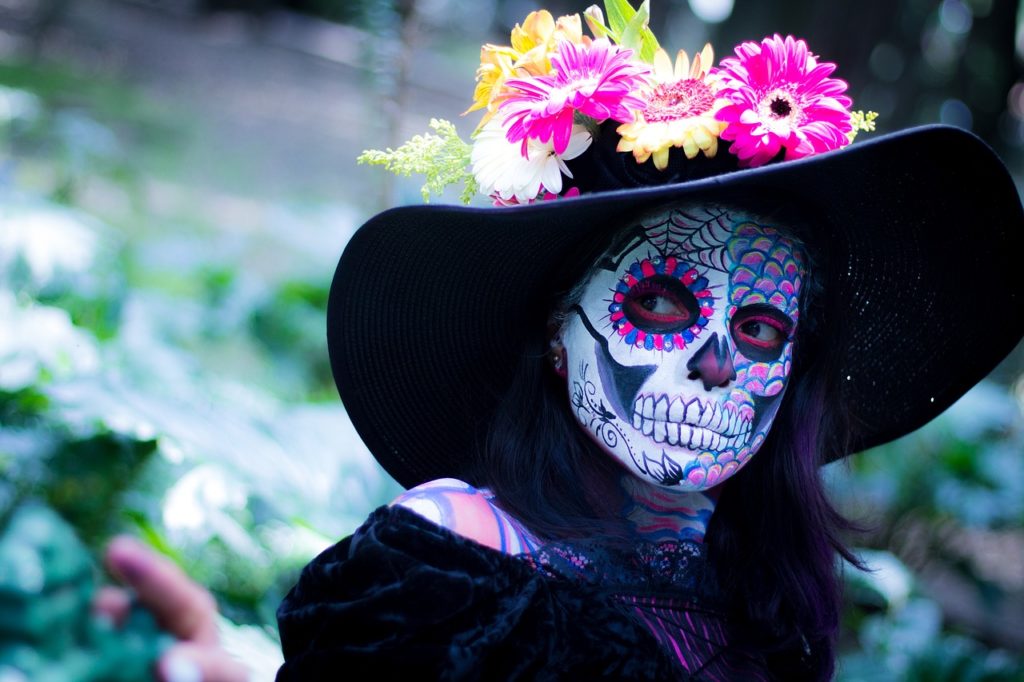All fields are required
Posted in Food Safety on November 1, 2018

Holidays tend to be truly wonderful, pleasant days. Different countries have their different celebrations. Every family has their own unique way of celebrating even the most traditional holidays. In Mexico, one of the most known celebrations is for el Dia de los Muertos, which directly translates to mean “The Day of the Dead.” While this holiday meant for honoring deceased ancestors is specifically observed on November 1st and 2nd, celebrations are already in full swing! As is common in many holidays, food and drink play a huge part in the festivities role on this particular holiday, since these objects are the ofrendas (“offerings”) placed on altars meant to entice deceased loved ones to return for a visit. Here’s what you need to know about the food!
Foods like sugar skulls, tamales, and alcoholic spirits are the kinds of offerings that you’ll find on the altars during this holiday. Altars within homes and built around tombstones are specifically used for the Day of the Dead. These altars are used to welcome the spirit of ancestors back into the home. Visiting the ancestral burial ground in order to celebrate with picnics and music is also a highly common practice! Aztecs developed this ritual thousands of years ago since they firmly believed that one should not spend time grieving the loss of a loved one who had passed, but instead that you ought to celebrate their life. This turned into a welcoming-home of their spirits, back to the land of the living where food, drink, and music offerings were available, once per year.
According to the cultural arts curator for the Smithsonian’s National Museum of the American Indian, Hayes Lavis, mourning was not allowed since it was understood that tears made a spirit’s path both slippery and treacherous. According to Lavis, “This day is a joyous occasion; it’s a time to gather with everyone in your family, those alive and those dead.” From the evening of October 31st until November 2nd, it is believed that spirits come and visit their family, so the streets of Mexico near the cemeteries are filled with decorations such as papel picado, flowers, candy skeletons and skulls, and parades.
Now, it’s important to understand that everything added to the altar has a unique meaning. People celebrating the holiday tend to pick carefully from this symbolic list of items:
If you are planning on partaking in this holiday, then you want to be sure you do it correctly, making sure to avoid any chance of unwanted outcomes – that is, foodborne infections. The much-loved Mexican meals that are most often cooked for el Dia de los Muertos are delicious, but also present their fair share of food poisoning risks if improperly handled. In order to best protect yourself, your family, and your holiday from any sort of bacterial infection, be certain you follow the principles of food safety during every cooking experience: Clean, Separate, Cook, and Chill.
All surfaces, utensils, pots, pans, and appliances must be thoroughly cleaned before cooking can commence. If not, then you’re risking the spread of contamination by using dirty cutting boards, bacteria-ridden sinks, germy handles, and more. Beyond that, you must be sure to keep your raw meats separate from all over food at all times. Salmonella bacteria is commonly found in the juices from raw chicken, poultry, beef, pork, or shellfish, and you want to be sure to not spread this contaminate. Be sure you cook all foods to safe internal temperatures, and keep all unused foods appropriately chilled so as to avoid the spread of harmful bacteria.
If you’re certain to keep all of your food safe from contamination, then you should have no issues partaking in this fascinating, historical holiday!
By: Abbey Ryan Elder, Contributing Writer (Non-Lawyer)
Notifications